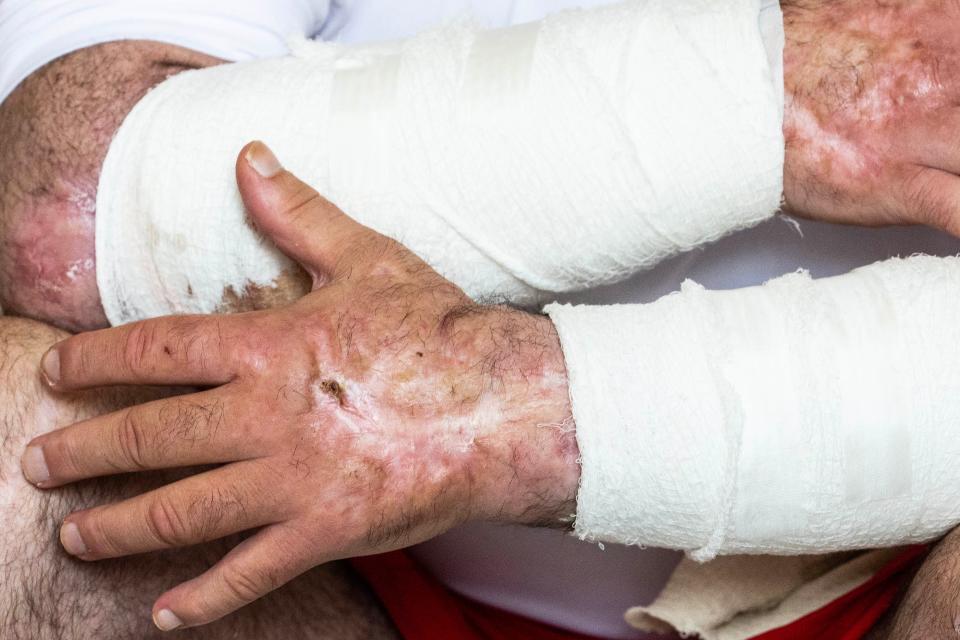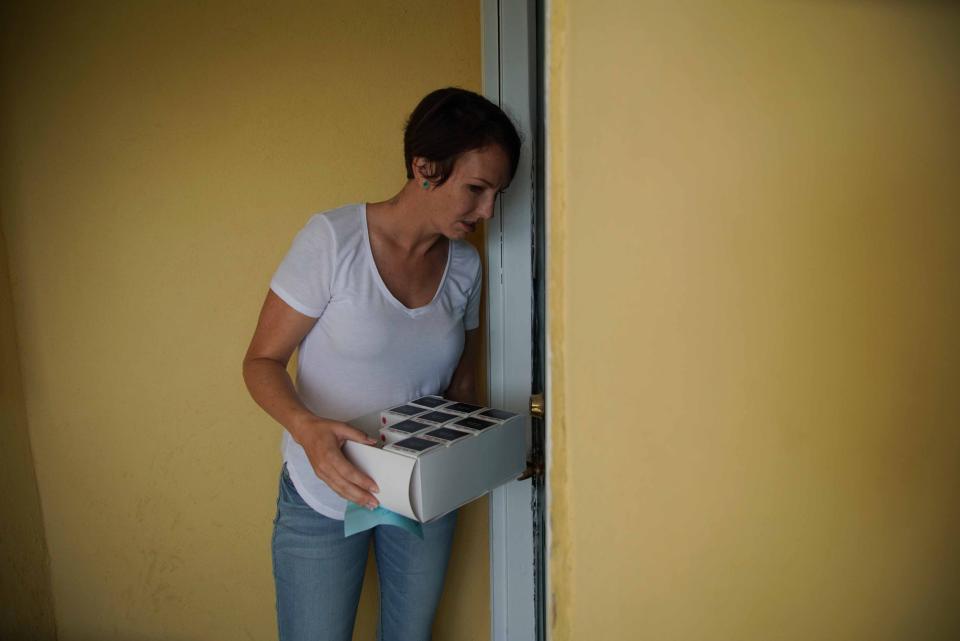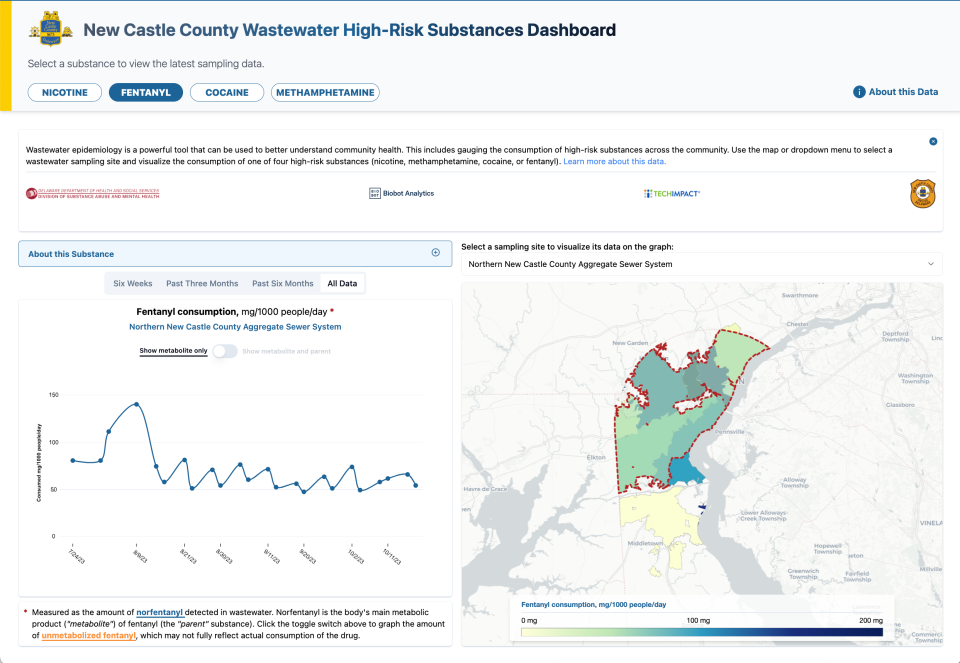New Castle County’s wastewater has been tested for drugs. Here are the results
Substance abuse continues to ravage Delaware’s communities, often going unseen until it becomes irreversible. But a new testing method may be able to inform officials on where help is needed, and the data comes straight from your toilet.
New Castle County’s wastewater has been undergoing weekly testing to detect traces of nicotine, methamphetamine, cocaine and fentanyl to better understand the impacts of the drug epidemic that has plagued Delaware in recent years.
In the three months since testing began, the results have already led to the testing program’s expansion going into next year.
A dashboard with the results is available to the public online.
More: Wilmington lands $3M grant to repair aging sewer system. Here's who will be impacted
When did the program start?
Wastewater has been tracked in New Castle County since the height of the COVID-19 pandemic when samples were tested to track the spread of the virus.
Massachusetts-based analytics company Biobot worked with county governments around the country, including New Castle County, on tracking COVID-19. The national program ended up informing the federal government of around one-third of all the national data on COVID-19 cases.
In April of this year, New Castle County Executive Matt Meyer announced that Biobot, in partnership with the state’s Department of Health and Social Services and Division of Substance Abuse and Mental Health, was going to track the county’s wastewater for traces of fentanyl, methamphetamine, cocaine and nicotine.
More: Delaware sees a spike in drug deaths for women, but better access to care
The plan was to combine the data in a dashboard that could be easily viewed by the public and used by health officials to pinpoint where community outreach programs and life-saving resources are needed most.
“To make great policy, you need great data,” Meyer said. “This data will help us understand where there’s a public health problem. We can allocate policing, educational and public health resources in a way that reflects not our own biases and misunderstandings, but where [the substances] actually are.”
Testing did not officially begin until August and the dashboard went live Nov. 10.
According to Department of Health and Social Services:
537 people died of a drug overdose in Delaware in 2022, the third-highest death rate in the nation
85% of the overdose deaths in 2022 involved fentanyl
44% of overdose deaths in 2022 contained cocaine
12% of overdose deaths in 2022 involved methamphetamine
As of Nov. 9, there have been 404 suspected overdose deaths in Delaware this year
What do the results say?

Alex Buben, an epidemiologist at Biobot, said that the past three months of testing have given him and other public health officials a good baseline of longer-term substance abuse trends.
“The main takeaway is that fentanyl, methamphetamine and cocaine are everywhere,” Buben said. “We have not seen any locations which have not detected those substances.”
New Castle County follows a nationwide trend that shows drug use is rarely confined to just one area.
“We do see slight differences between communities,” Buben said. “But on the whole, it really is a burden that is shared equally. The areas are much closer together than people think.”
More: Delaware prison health care providers prioritized profit over care, new lawsuit claims

New Castle County Police Department’s behavioral unit and first responders can use the data for more timely dispatches. In the case of nicotine especially, educational materials can be targeted to schools where underage vaping continues to be a public health concern.
“The traditional way to figure out what’s going on is by using overdose numbers,” said Michael Harris, Stormwater & Environmental Programs Manager for New Castle County. “This gives us an ability to look at what’s happening before people die.”
More results to come
This month Biobot and New Castle County expanded the testing to include xylazine, an animal tranquilizer that is commonly mixed with fentanyl, otherwise known as “Tranq.” The highly addictive and dangerous drug often causes wounds that disintegrate the user’s skin and it cannot even be reversed by Narcan.
More: 'Tranq dope' is killing Delawareans. The state hopes these tests will help curb overdoses
Tranq data may narrow down substance use trends to more specific areas, which seems to be the case on a national level. But it may also shed light on when the drug makes its way into communities.
“[Tranq] is the spottiest of any drug we’ve looked at,” Buben said. “There are some locations in which it just hasn’t appeared yet, somewhere it seems to be a product of cyclical supply and somewhere it’s there all the time.”
Early next year the testing will expand even more to include naloxone, otherwise known as Narcan, the life-saving drug that can reverse overdoses. These tests will not only show disparities on where Narcan can be better distributed, but they will also indicate areas where substance abuse problems and overdoses are going unreported.
More: More monitoring coming to the Delaware City Refinery, resident complaints are encouraged
How to interpret the data

Thirteen locations around New Castle County were used to test for the four substances, which can be individually evaluated on the database website.
Also listed on the site are the metabolite and parent compound for each drug, essentially separating between the pure compound and the compound that is excreted by the body after consumption. For a drug like methamphetamine, which undergoes chemical changes in the body, this indicates that more people are fully consuming the drug.
This can also help distinguish between drugs that are being manufactured in plants such as NORAMCO in Wilmington or legitimately distributed in a medicinal setting.
Resources
Delaware Hope Line: 833-9-HOPEDE for free 24/7 counseling, coaching and support, as well as links to mental health, addiction and crisis services. Resources also can be found on the Help is Here website.
Suicide and Crisis Lifeline: 988
SAMHSA National Helpline: 800-662-HELP (4357) for free 24/7 substance abuse disorder treatment referral services. Treatment service locators also are available online at findtreatment.samhsa.gov or via text message by sending your ZIP code to 435748.
Contact Molly McVety at mmcvety@delawareonline.com. Follow her on Twitter @mollymcvety.
This article originally appeared on Delaware News Journal: New Castle County’s wastewater is tested for opioids and nicotine

